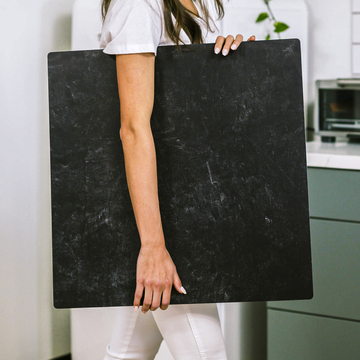As a product photographer with over a decade behind the lens, I've discovered that tile backdrops are far more than just pretty surfaces - they're sophisticated tools that can dramatically elevate your photography. Let me share some hard-won insights about why these humble squares deserve a prime spot in your studio arsenal.
The Physics of Light on Tile
What makes tile truly special is its unique interaction with light. The glazed surface creates what we call "micro-diffusion zones" - microscopic variations that scatter light in predictable, controllable patterns. This dual-reflection property offers both crisp specular highlights and soft, diffused light from a single surface - something that typically requires multiple modifiers to achieve.
Leveraging the Grid System
Those grout lines that many photographers try to hide? They're actually secret weapons for composition. During countless commercial shoots, I've used them as built-in measurement guides to ensure perfectly consistent product placement across entire campaigns.
Pro Tip: Working with Grout Lines
- Use grout intersections as precise placement markers
- Leverage the natural beveling for subtle shadow definition
- Match grout width to your product scale for optimal composition
Temperature Control: The Unsung Hero
Here's something they don't teach in photography school: tile's thermal stability is a game-changer during long shoots. While other surfaces heat up under continuous lighting, quality ceramic tile maintains consistent temperature. I've saved countless food photography sessions because my ice cream stayed perfectly frozen while other photographers struggled with melting products.
Technical Considerations for Perfect Shots
After years of testing different materials, I've developed a precise formula for selecting the ideal tile backdrop:
- Choose tiles between 8-10mm thick for optimal stability
- Look for porosity ratings under 0.5% for consistent color rendering
- Select a minimum 12x12 inch size for versatile product arrangements
Maintenance for Optimal Performance
Your tile backdrop is precision equipment, not just a surface. I maintain mine using this tested cleaning routine:
- Daily: Dust with a microfiber cloth
- Weekly: Clean with distilled water and white vinegar solution
- Monthly: Deep clean and check for any chips or scratches
Understanding these technical aspects of tile photography isn't just academic - it's practical knowledge that consistently delivers professional results while reducing post-production time. Through careful material selection and proper maintenance, your tile backdrop can become one of the most versatile tools in your photography arsenal.
Common Questions from My Workshops
In my experience teaching professional photography workshops, these questions come up most often:
- Best tile color for product photography? Neutral grays with a matte finish offer the most versatility
- How to minimize glare? Position lights at 45-degree angles and use polarizing filters
- Portable vs. permanent setups? Consider 24x24 inch sections mounted on lightweight board for mobility
Remember, mastering tile photography is about understanding both the science and the art. Start with these fundamentals, but don't be afraid to experiment and develop your own techniques as you grow.


